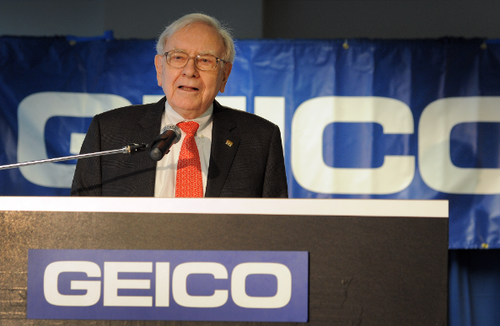Economics
“The Pain Has Just Begun” For Risk Assets Heading Into 2023
"The Pain Has Just Begun" For Risk Assets Heading Into 2023
Submitted by QTR’s Fringe Finance
I’m extremely excited to bring you today…

“The Pain Has Just Begun” For Risk Assets Heading Into 2023
Submitted by QTR’s Fringe Finance
I’m extremely excited to bring you today a substantive and engaging look at the world of macro from one of my favorite commentators on markets, Harris Kupperman. Harris released his fund’s Q4 2022 letter over the weekend, and it contains a wealth of thoughts and ideas – not only on Harris’ individual positions – but on the state of markets and macro in general.
In this quarter’s letter, Harris reflects on 2022, which was a historically difficult year for most investing strategies. He discusses his fund’s approach to inflection investing, winners and losers and how their Event-Driven strategy generated considerable Alpha for investors in a challenging environment.
For those that don’t know him, Harris is the founder of Praetorian Capital, a hedge fund focused on using macro trends to guide stock selection. Mr. Kupperman is also the chief adventurer at Adventures in Capitalism, a website that details his investments and travels.
I find Harris’ opinions – especially on macro and commodities – to be extremely resourceful. I’m certain my readers will find the same. I was excited when he offered up his latest thoughts to Fringe Finance, published below. Photos and bold emphasis added by QTR and not in the original letter. Please also read full disclaimer available here.
Please also make sure to read the disclaimer at the bottom of this post.
As 2022 is now complete, I’d like to focus on the five core trends that we were invested in during the year, zeroing in on the fact that not a single one of them worked—which is something of a rarity during my career.
To start with, our “Russian Adventure” (for lack of a better term) has been a disaster, costing us approximately 770 basis points net of fees. While I’m hopeful that this may be reversed at some future date, there is zero clarity on when or if we will ever have this capital returned to us.
Our exposure to legacy media (primarily print and radio) transitioning to the digital space was also rather disappointing. While these businesses made considerable progress in terms of growing their digital businesses, declines in their legacy businesses accelerated in some cases. Meanwhile, fears of an advertising recession during 2023 hurt the share prices of our investments.
Our four current positions have declined between 24% to 46% during the course of 2022—though we did not own two of them at the start of the year. Clearly this performance was far from ideal—despite the strong underlying trends toward a digital transformation remaining intact.
Moving on, I was quite bullish on US housing, yet housing doesn’t really “work” with mortgages rates moving into the 7% range like they did during the year. Our largest housing position, St. Joe (JOE – USA) declined by approximately 26% during the year, while our housing materials businesses saw their end markets vaporize during the fourth quarter.
Fortunately, we were able to exit our housing materials exposure for a small net gain, as we purchased them quite cheaply and traded around them adroitly. As an inflection investor, I know that I’ll frequently get the thesis wrong. Therefore, discipline on valuation and speed on the exit when the macro turns is paramount. I’m particularly proud that we were able to earn a small return on what turned out to be a mistaken investment thesis.
When employed correctly, inflection investing works, and the slight positive performance of our materials names, despite getting the thesis wrong, is proof of it. At the same time, the trend towards net migration to Florida picked up steam during the year, with Florida becoming the state with the most net migration in the nation.
Clearly this is a long-term positive for JOE, even if interest rates remain a short-term headwind. As a result, we used weakness in the share price to dramatically increase the size of our position in JOE, mostly at prices below where the shares ended the year.
Now, let’s go to our largest exposures at the start of the year, oil and uranium. Oil effectively roundtripped during the year, with Brent Oil increasing from $78 to $86 during the year, after peaking out at $139.
Our oil exposure has mostly consisted of two core investment genres—long-dated oil futures and futures call options, and oilfield service providers. In the case of oil, despite a lot of movement, the price ended only 10% higher than where it started, and we experienced minimal net movement on our long-dated oil positions. Fortunately, our oilfield services positions appreciated dramatically, becoming one of the few victories in the portfolio during 2022.
While I’m proud of the performance of the services names, it’s worth being intellectually honest here. I thought that oil would end the year much higher than it did. However, as I’ll discuss shortly, I think this performance has simply been deferred into 2023.
Finally, spot uranium prices appreciated moderately from $42 to $49. Yet, once again, we suffered in this thesis. Kazakhstan is slowly being dragged into the Russian and Chinese orbit, which has not been a positive for Kazakh asset valuations, mostly priced amongst Western investors. This was further compounded by a rather messy power change during January, as long-time strong-man, Nazarbayev, was replaced with Russian help. As you can imagine, this was a negative for our sizable position in Kazatomprom (KAP – LI), and it declined from $36.75 to $28.14 during 2022. However, Sprott Physical Uranium Trust (U-U – Canada) did appreciate by 6% in US Dollar terms during the year. Once again, I had a thesis on uranium, and it didn’t quite work out as I had expected. Even worse, our only producer got caught up in unexpected geopolitical turmoil, leaving our portfolio with a black eye.
In summary, this was a rather miserable performance for our portfolio’s core positions, made worse by how concentrated the portfolio has been over the past few quarters. When I think back on 2022, quite honestly, nothing worked—four out my of our five core themes went nowhere, while our Russian positions completely detonated. That said, we still made it through the year with a small net gain and I want to focus on this gain to explain why I remain such a strong believer in the power of inflection investing.
How did we show a positive result when our core themes failed us?
To start with, outside of our “Russian Adventure,” we did not suffer any catastrophic losses. Losses are the bane of an inflection investor as you must first overcome losses before showing gains. In this regard, my rigorous focus on balance sheet strength, cash flow generation, and most importantly valuation, helped to ensure that when we got a theme wrong, we suffered only slightly—or in the case of housing materials, earned a small positive return.
Secondly, I successfully traded around positions to mitigate losses, earn some yield on short option positions and work to constantly lower our cost basis when possible.
Thirdly, I was fast to exit inflecting themes when the strength of the macro faded. Inflection investing, at its core, utilizes the strength of a macro tailwind, overlaid upon deeply distressed valuations. Value stocks can stay cheap or even become cheaper. It is the macro tailwind which serves to unlock the valuation. Hence, when the tailwind turns downward, the speed of the exit is critical.
Finally, our Event-Driven book was the gift that kept on giving. Even during 2022 when Event-Driven returns were sedate, they were still rather consistent, allowing us to generate cash that was deployed for de-levering or adding to positions when appropriate.
Warren Buffett has famously merged an insurance business with a securities portfolio. During most years, this has allowed him to generate consistent underwriting gains and continue to add to his portfolio, without having to use portfolio leverage in the form of broker margin. As a result, he can ignore market conditions, harvest cashflow, and frequently make large purchases during distressed periods in the markets. Instead of insurance, I prefer to use Event-Driven strategies to generate this cash, also adding to our positions during moments of stress.
While insurance is frequently not correlated with stock market cycles, our Event-Driven book’s returns tend to be inversely correlated with the markets. During periods of increased volatility, the EventDriven book tends to do better, whereas during periods of benign market activity, the Event-Driven book tends to produce minimal returns. This effect frequently offsets the depreciation of the core portfolio, becoming something of a hedge to overall volatility, while offering a tool for me to take advantage of market dislocations.
I naturally believe that Warren Buffet’s model is superior to simply owning a static portfolio of CUSIPS, waiting for them to appreciate. Having an active business tucked inside of a portfolio, earning cash flow, is an amazingly powerful tool. We’ve emulated that approach, with great success thus far, in the Event-Driven arena. Of course, just as with insurance underwriting, we will occasionally suffer large losses on the Event-Driven book. As a result, I tend to size the positions in a manner that is intended to ensure that no one position can cost us much more than 1% of our capital under normal circumstances. Should we ever experience a larger loss, it would be the result of multiple Event-Driven positions becoming correlated. While this is quite possible, it tends to be a rare occurrence.
It is notable that even during the peak turmoil of the March 2020 Covid collapse, the Event-Driven book produced astonishingly strong short-term returns for us, allowing us to continue averaging down when other funds had fully utilized their capital reserves long before the markets had bottomed. While the Event-Driven book will remain somewhat unpredictable in terms of the rate of return, it has thus far been a great boon to our overall returns. My expectation is that this will continue. However, there will be periods like during 2022 where results are tame and made worse by a conscious decision on my part to reduce exposure in the Event-Driven book as I await periods of heightened volatility.
Finally, it goes without saying that we will have years where the portfolio declines in value. This is inevitable. However, my goal is to ensure that these declines are not due to permanent losses of capital—rather they are due simply to short-term volatility within the markets. In that regard, we have yet to experience a down year at the portfolio level—despite highly volatile and varied market conditions over the past four years. I am hopeful that we can continue to build upon this record.
For most of the past decade, unusually easy monetary conditions allowed a bevy of Ponzi Schemes to expand to near biblical proportions. While the finance industry has always experienced waves of small stock promotes that retail investors would briefly fixate on, never before have so many of these Schemes grown to such a size and taken on such a relevance to the global economy.
Over the past few years, millions of US citizens were employed by Ponzis that had no chance of ever showing economic profits. Fake currencies, backed (at best) by monkey JPEGs, grew to values in the hundreds of billions. Companies owned by venture capitalists, many of which did not even pretend to do anything productive, were supposedly valued into the tens of billions, despite the fact that a handful of insiders set the prices of each financing.
The prevalence, size, and longevity of many of these Schemes warped investors’ minds, and investors came to believe that metrics other than cash flow ultimately mattered. That world is now changing, and fast. I’ve always said that Ponzi Schemes are inherently unstable. They are either expanding or collapsing; they rarely exist in a state of equilibrium. Once they begin to collapse, they rarely reinflate, and the rate of collapse tends to accelerate due to leverage and cash demands.
While we’ve seen the values of various SPACs and green energy frauds rapidly collapse, the victims were mostly cloistered amongst the speculators and retail investors that often transfer their capital to professional grifters during bubbles. The next phase of collapse tends to focus on larger businesses, frauds that have become oddly respected due to their prolonged existence—we’re now midway through this phase. If history is a guide, there will soon be a period of introspection, followed by new waves of collapse. I wouldn’t be surprised if many prominent PE and VC funds show epic losses in the coming years. Their very existence has mostly been a house of cards, built on quicksand, fused together by low rates.
Inflation and interest rate increases will rupture these unstable edifices—only compounded by the fact that so many of these businesses do sham transactions with each other. The past few decades have experienced a pronounced wealth effect, and this feedback loop has driven much of the consumption boom that we’ve come to think of as a normal state of affairs.
As this all goes in reverse, I expect a lot of pain. 2023 will be a bad year for risk assets. It will be a bad year for many financial products. It will simply be a bad year—that is, until the Federal Reserve cannot take the pain. At some point, they’ll choose inflation over an economic collapse. That will be our signal to get long—very, very long inflationary risk assets. To date, we are exposed, but I intend to really press it when the time is right. That time isn’t today, but it is coming soon. I hope to be prepared, yet patient, in terms of when to gross up our exposure.
Returning to our portfolio, having been critical of Ponzi Schemes for much of the past decade, I boldly chose not to invest in Ponzi Schemes during 2022. That decision saved us from a lot of grief. I realize that refusing to invest in fraud is rarely mentioned as a positive attribute of someone’s investing process, but for most of the past decade, such a refusal would have led to dramatic underperformance, as low interest rates and money printing turned much of the globe into a Ponzi economy. We rented some Ponzis at times during 2022, but we never invested.
I remain mesmerized and befuddled by how many prominent and well-respected investors, after struggling with cash flow based investing during the Ponzi bubble, moved to the dark side and fully-embraced Ponzis. 2022 was the year when they all wished that they’d stayed disciplined. Fortunately, we do not confuse Ponzis with real businesses. While our performance was rather tame during 2022, we also managed to sidestep the carnage in Ponzis. While 2022 was a bad year for fraud investing, I think that 2023 will be lights-out for many of these entities as they are forced to liquidate their Schemes and terminate their employees. The pain has just begun.
On the flip side, I remain unusually bullish on energy and believe that it will be the core market theme over the next few years. We’ve covered the reasons for my bullishness in prior letters. Rather than rehash old material, I’d like to focus on why my thesis has not panned out thus far.
To start with, oil is a global commodity that is governed by supply and demand. During the second half of the year, that supply increased as the US and other OECD countries released hundreds of millions of barrels of oil onto the commercial markets. On the demand side, China continued to try to control the spread of germs through arbitrary lockdowns. These two factors now appear to be reversing.
On the supply side, not only are strategic petroleum reserves depleted, but Russia along with some OPEC countries appear to be experiencing production declines. Meanwhile, on the demand side, China is now reopening at a time when many other countries are experiencing explosive demand growth caused by their populations entering their respective S-Curves, compounded by an acceleration of gas to liquids switching for electricity generation.
In broad numbers, I believe that while the oil market was slightly oversupplied during the second half of 2022, it will swing to a substantial deficit by the end of 2023. In rough numbers, that swing will be comprised of: 2-3 million of increased Chinese demand, 1 – 1.5 million of SPR release abatements, 1 million of Russian energy production declines, and 1 – 2 million of other global demand increases, all offset by roughly 1 million in further global supply growth, mainly from US shale. Overall, this tallies to a swing of between 4 and 6.5 million bbl/d.
Of course, such a swing would be massive by any historic measure and likely lead to an energy crisis like we have not witnessed in many decades. Just to be clear, my expectation is that the deficit will not end up being 4 to 6.5 million bbl/d, but that is only because the price will spin out of control and the demand side will suffer.
Such a scenario likely only accelerates the collapse of non-energy risk assets, particularly as Central Bankers panic to raise rates and quell inflation. In summary, 2023 will be a maelstrom, but I like to think we’re positioned as well as we can be for what’s coming.
Continue reading this letter and read Harris’ top five position reviews of his individual positions here.
Tyler Durden
Tue, 01/24/2023 – 09:25
dollar
inflation
commodities
commodity
monetary
markets
reserve
interest rates
bubble
us dollar
money printing
inflationary

Argentina Is One of the Most Regulated Countries in the World
In the coming days and weeks, we can expect further, far‐reaching reform proposals that will go through the Argentine congress.
Crypto, Crude, & Crap Stocks Rally As Yield Curve Steepens, Rate-Cut Hopes Soar
Crypto, Crude, & Crap Stocks Rally As Yield Curve Steepens, Rate-Cut Hopes Soar
A weird week of macro data – strong jobless claims but…
Fed Pivot: A Blend of Confidence and Folly
Fed Pivot: Charting a New Course in Economic Strategy Dec 22, 2023 Introduction In the dynamic world of economics, the Federal Reserve, the central bank…
























